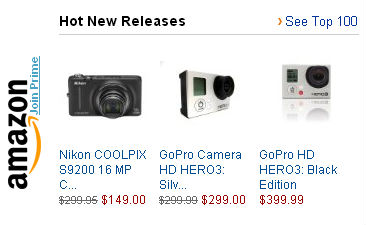Understanding these concepts allows you to make more informed decisions about your expenses and improve your business undertakings. This equation also gives entrepreneurs considering buying small businesses useful information about projected profits. Lastly, you would also come to know the number of units and revenue needed in order to make a profit. This is a fixed cost because you will be required to pay insurance premiums to the insurance company as per the contract. For example, here’s what the data looks like for ZenX Private Limited. Now, let’s explore how these fixed expenses may fall into different categories depending on the nature of the cost.
These costs don’t change based on sales volume and are therefore fixed. The greater the percentage of total costs that are fixed in nature, the more revenue must be brought in before the company can reach its break-even point and start generating profits. Fixed costs are output-independent, and the dollar amount incurred remains around a certain level regardless of changes in production volume. Variable costs are less predictable because they change based on how much your business produces, which makes budgeting and financial forecasting more difficult.
Real-World Examples of Fixed Cost Calculation
Explore case studies highlighting successful fixed cost management strategies implemented by businesses across different industries. To give you a closer look at how real businesses handle fixed costs, here are the 3 examples of popular brands that manage their fixed costs during the business operation. XYZ Dolls must add that average fixed cost of $13.40 to the sales price to make sure they make up for the fixed cost. In this example, the average fixed cost for your manufacturing company is $30 per unit. Outdated or inaccurate data can lead to incorrect calculations and flawed decision-making.
How To Calculate Fixed Costs: A Comprehensive Guide for Businesses
The total variable cost is the sum of all these individual variable expenses. Cost accounting requires business owners to analyze types of costs and production volumes and assign all costs to a unit of output. As a business owner, you can’t generate a profit without covering all fixed and variable costs. But to cover those fixed and variable costs, you have to understand the differences and know how to calculate average fixed costs. Fixed expenses directly contribute to computing the break-even point, the level of sales that must be met or exceeded at a minimum to cover the total cost incurred.
- However, their profit significantly changes when revenue fluctuates.
- It can be seen as expenses incurred by a company irrespective of the level of business activity, which may include the number of units produced or sales volume achieved.
- According to the production manager, the number of toys manufactured in April 2019 is 10,000.
- This involves the cost of electricity, gas, phones, trash, sewer services, etc.
In the case of some rental properties, there may be predetermined incremental annual rent increases where the lease stipulates rent hikes of certain percentages from one year to the next. However, these increases are transparent and baked into the cost equation. Consequently, accountants can calculate their companies’ overall budgets with the lead time necessary to ensure a business’s bottom line is protected. Hidden costs, such as additional time spent on customer support or software updates, can lead to underpricing and negatively affect profitability.
- These four terms are related and explain why a business incurs a particular cost.
- The finance manager needs to flag up which costs will rise as sales activity increases.
- Some costs may be fixed for some enterprises but variable for others.
- In the SaaS industry, incomplete or outdated data can lead to inaccurate AVC calculations, affecting pricing decisions and profitability.
- Once you know the total fixed cost of your business, you can use that information in various ways.
How To Calculate Cap Rates For Rental Real Estate: A Comprehensive Guide
By partnering with specialized service providers, you can save money and focus on your core business competencies. When calculating fixed costs, it’s important to be accurate and avoid common mistakes. Errors in calculating fixed costs can lead to incorrect financial decisions and negatively impact your business.
Include the Future Expenses You’ll Have to Pay Due to Equipment Depreciation
These include direct labor costs, raw materials, sales commissions, and shipping fees. For example, if a bakery produces more loaves of bread, it will incur higher costs for flour and yeast, which are variable. In this blog, we focus on the discussion of fixed costs, a crucial component in any financial management for any entity. Knowledge of fixed costs helps organizations in budget planning, price setting, and conducting break-even analyses. In this blog, we will cover what fixed costs are and look at fixed costs with examples, formulas, the methods of calculating fixed costs, and their relevance in financial statements.
It refers to a periodic allocation of a tangible asset’s value lost due to wearing out, deterioration, or obsolescence of its production resources e.g. buildings, vehicles, and machinery. Businesses incur depreciation expenses often and in relation to the value of an asset that has been purchased. This includes the cost of leasing or owning your business premises and the utility bills, how to calculate fixed cost such as electricity, water, and gas. These costs usually stay the same, whether you produce one unit or a thousand.
So if you want to make $500 in profit, you would need to sell five widgets at $100 each. If you are looking to understand how our products will fit with your organisation needs, fill in the form to schedule a demo. Fixed costs are referred to as supplementary, indirect, and overhead costs. Conor McMahon is a writer for Zippia, with previous experience in the nonprofit, customer service and technical support industries. He has a degree in Music Industry from Northeastern University and in his free time he plays guitar with his friends.
Fixed costs are expenses that do not change with production, such as $2,000 monthly rent or $500 fixed employee salaries. For example, You have two separate variable costs, $60 and $30, if you have 10 units of Item A at a variable cost of $60 per unit and 15 units of item B at a variable cost of $30 per unit. These 2 variable expenses are combined into your average variable cost, a single, reasonable sum. While total variable cost reveals how much you spend on each unit of your product’s development, you may also need to consider items with various variable costs per unit. Due to the possibility of an increase in rent within a year, fixed costs are estimated for a little time. The company must determine its fixed costs to determine a fair price for its goods.
In this section, we’ll discuss some common errors to avoid when calculating fixed costs. Effectively managing your fixed costs offers numerous benefits to your business. In this section, we will discuss the advantages of managing fixed costs to help you make informed decisions for your company. Increasing manufacturing and creating more dolls is one method to do this. Mr. Hari Lal Ltd. spends 14.20 in fixed costs per unit produced at the present rate of 6,000 dolls each month.
Any changes in fixed or variable costs impact COGS, influencing the gross profit. Some enterprises may also have semi-variable costs which combine fixed and variable expenses. Imagine a vehicle rental business charging per-mile charge along with a base rate. Hiring vehicles from this company means paying the base cost (which remains fixed) and per-mile cost (which varies depending on the distance).
As such, it is important to understand the concept of fixed assets as it can be crucial in achieving profitability targets. When you’re aware of your fixed costs, it allows you to plan and strategize based on the cost structure. Knowing these expenses upfront enables you to make better decisions on business operations, pricing, and financial planning. Consequently, this will lead to financial stability and long-term profitability. If your fixed expenses are $100 and your variable costs are $20 for a $200 product, your total costs ultimately make up 60% of the sale price, leaving you approximately 40%. While it’s true that they don’t fluctuate with production volume, they can still change over time.
A company only pays for shipping whenever it sells and sends out a product. Many companies must get permits or licenses to operate lawfully, and they sometimes have to pay a monthly fee to update those permits/licenses. For instance, establishments that sell alcohol need to apply for and renew their liquor license annually. It represents the compensation given to the personnel employed in the office and manufacturing. To do that, they divide a machine’s repair and maintenance costs for one year by the machine hours used in the same year. Last year, a machine had $500,000 in repair and maintenance costs and 2,000,000 machine hours.


